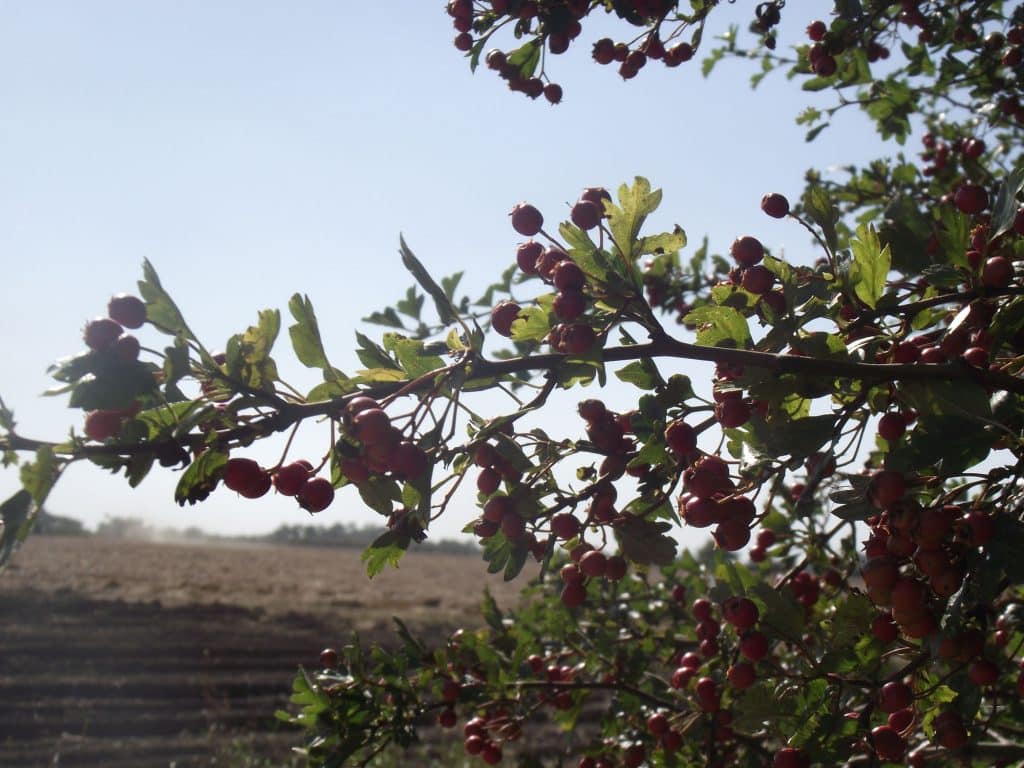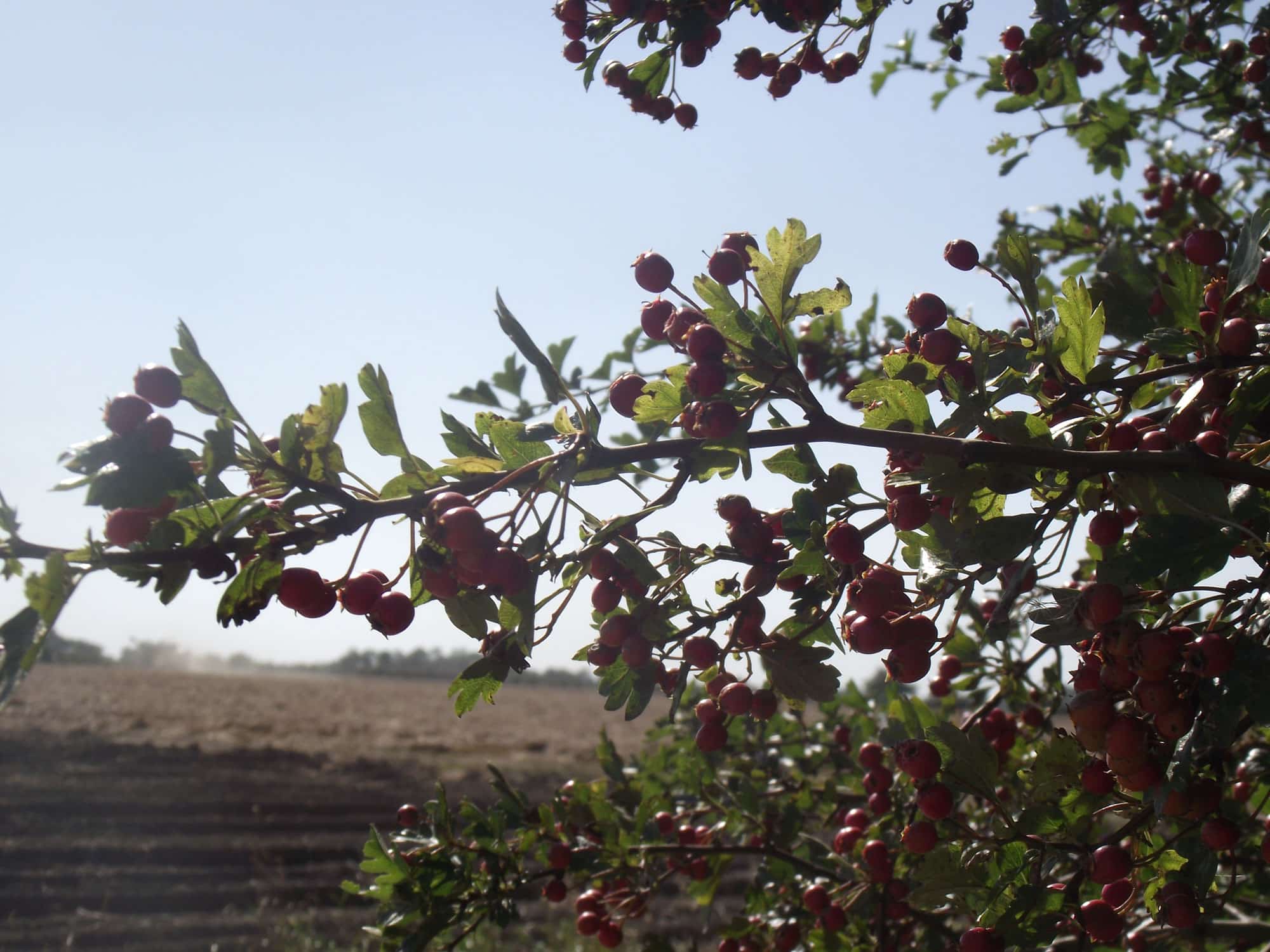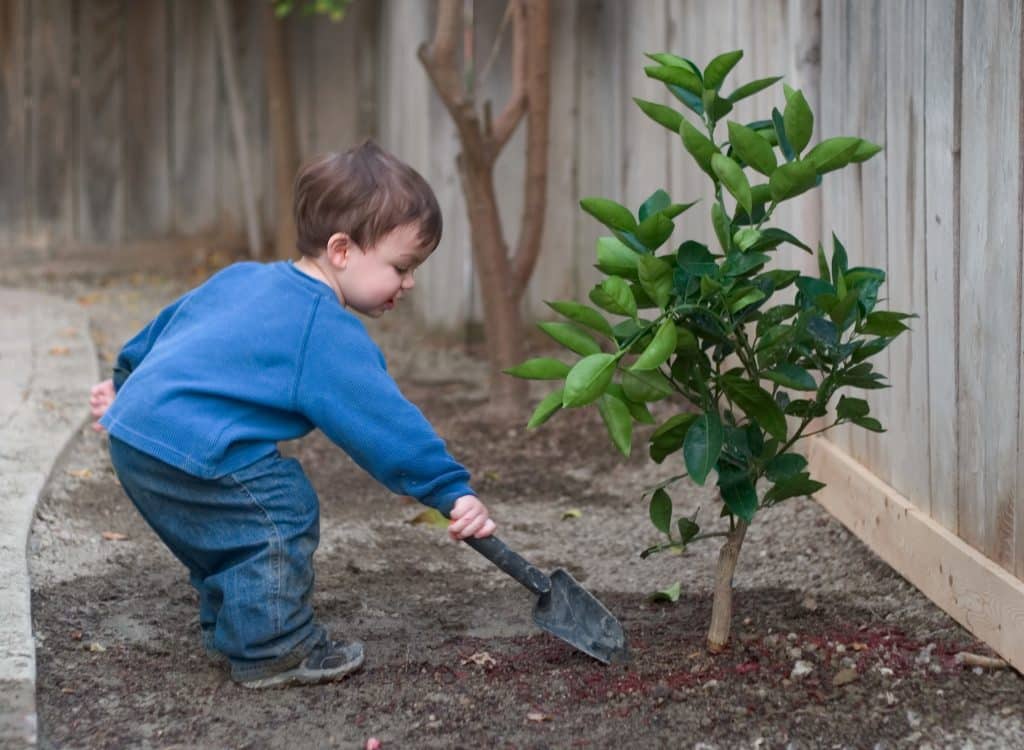26 Dec How to plant a tree and help it thrive
The best time to plant a tree was twenty years ago. The next best time is now. ~Chinese proverb. In this article we show you how easy it is to plant a tree and care for it.
Why plant a tree?
I can’t imagine our Country without trees. Can you? For centuries trees have played a vital part in British gardens and in the wider landscape. Whether we’re talking about the forests that building materials and pit props or that ancient apple tree that supplied Granny with fruit for her unforgettable pies. Trees are part of who we are.
Trees are also vital for wildlife, particularly in urban streets and gardens. And if, like me, you worry about man’s effect on the environment, you’ll be pleased to know that trees work hard to improve our air quality and cool the earth. Even better, they do all that for free.

When you plant a tree think about what it can bring to your garden and the wider environment. This hawthorn tree offers screeing and privacy with tantalising views of the landscape beyond the garden. It sports beautiful blossoms in spring and colourful berries in autumn. In wildlife terms that’s pollen and nectar for bees, nesting sites and winter fodder for birds. That’s a whole lot of value from one smallish tree!
Choosing the right type of tree
The success or failure of your tree depends a lot on you planting the right tree in the right place.
Some species seem to grow almost anywhere, others are a bit particular about soil type, aspect and how close they are to buildings or other trees.
Your job is to find a tree that does what you want it to and suits the design of your garden and property. You need to be sure it won’t outgrow its space or be a nuisance to neighbours. And of course you need to check that it is compatible with the existing soil and will be happy with the amount of water, sunshine and exposure to strong winds that the site offers. Be super careful with your research if you plan to plant a tree in coastal areas. They don’t all like the salty air as much as we do.
Choosing a tree can be confusing but most suppliers are more than happy to help you select the right species.
Click here for help with choosing the right type of tree
How to plant a tree
For a tree to really thrive, it’s important that it’s planted and staked properly. Working in the landscape industry, we see and hear of so many trees that have failed due to basic planting mistakes.
- Clear a space. Begin by clearing a circular space at least one metre in diameter. Particularly if you are planting in a lawn. You don’t want any plants to compete with your new tree for water and nutrients.
- Dig the hole. The hole for your tree needs to be the size of the root ball with at least 15cm margin all the way round. Make sure the hole is roughly square and that the bottom sides of the hole are loose soil – no barriers to stop the roots spreading. A square shaped hole encourages roots to spread laterally and break through into the garden soil. Round holes can lead to a weaker root system.
- If the soil on site is poor, I like to put the soil from the hole onto a tarpaulin and then mix it with some mycorrhizal fungi before it’s replaced. Unless your garden soil is very poor there’s no need to add compost or fertiliser.
- The hole for your tree needs to be the same depth as the pot, or, if you are planting bare root trees, remember that the top of the planting hole needs to be level with the nursery line or root flare point on the tree.
- Place your tree and then stand back. View it from all angles to make sure it looks right. Keep moving the tree until you are happy with it. Remember, this tree is going to be here for a long time. It’s important that you get it right.
- At this point, some people like to introduce a short length of perforated plastic pipe into the hole. Put it in at about a 45 degree angle with the bottom of the pipe just beneath the root ball and the upper end 60-90 cm from the tree and just above the surface. This is optional but it does mean that when you irrigate the tree you can get water directly to the roots and not lose any to waste or evaporation. For bigger trees, the pipe should go all the way round the root ball for even watering.
- Once you’re happy with the position of your tree, pop in a stake. A proper stake – not the garden cane that came with the tree. There is good reason for staking your tree. Without support, a young, unestablished tree will rock in the wind loosening the soil around it’s roots. Loose soil means slower, less healthy establishment so staking your tree for the first couple of years will ensure it grows straight and strong. When tying the tree to its stake, be sure to use an adjustable tie with some means of stopping the tree rubbing against the stake. Something like this is good. J Toms Tree Tie
- Backfill the planting pit, firming the soil with your heel as you go. Then water thoroughly.
- Finally, mulch around the tree with bark mulch or compost. This will help supress weeds and keep the soil moist. It also looks good.
Matthew Wilson from the RHS demonstrates the best way to plant a tree
Caring for the trees in your garden
All living things need a certain amount of care. Especially if, in the case of trees, their shape is integral to the design of a garden.
Feeding: If they have been planted correctly, most trees won’t need supplementary feeding. They can draw enough nutrients from the soil around them. The exception to the rule is trees growing in pots. Your potted trees should be fed every 6-8 weeks using a proprietry tree feed and following the manufacturers instructions carefully.
Watering: Your newly planted tree will need plenty of water to help it get established. In this country, more often than not, Mother Nature will attend to that for you but in the first 6-8 weeks check regularly to make sure the soil has not dried out and water every day during prolonged dry spells. If you have sandy soil, be extra vigilant as the soil will dry out quickly.
Pruning: Tree pruning is a skilled job. Particularly when it comes to pruning fruit trees to improve productivity. Ask for expert advice before wielding the secateurs – this is not like cutting your childrens’ hair – lopped off shoots and branches won’t grow back! If in doubt, call in a professional landscaper who can show you how to prune properly.





Sorry, the comment form is closed at this time.